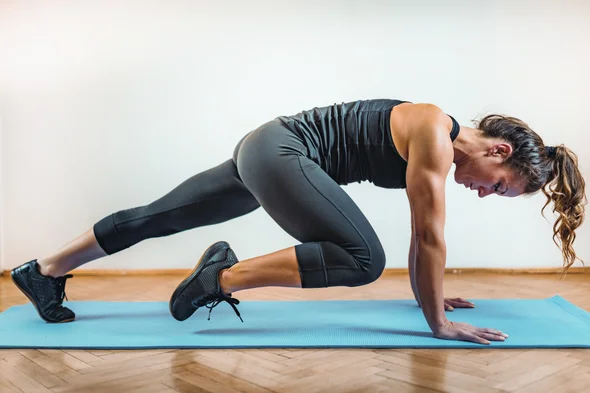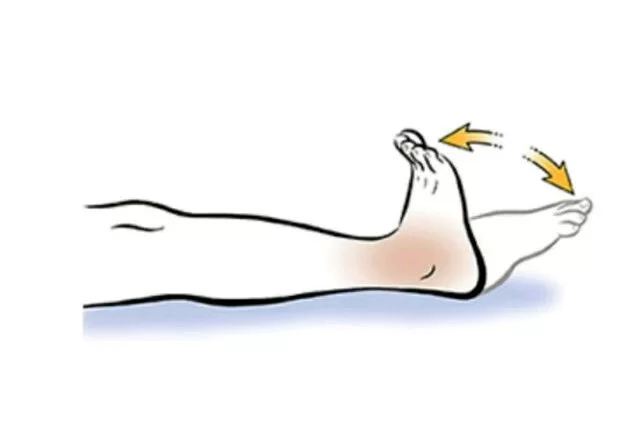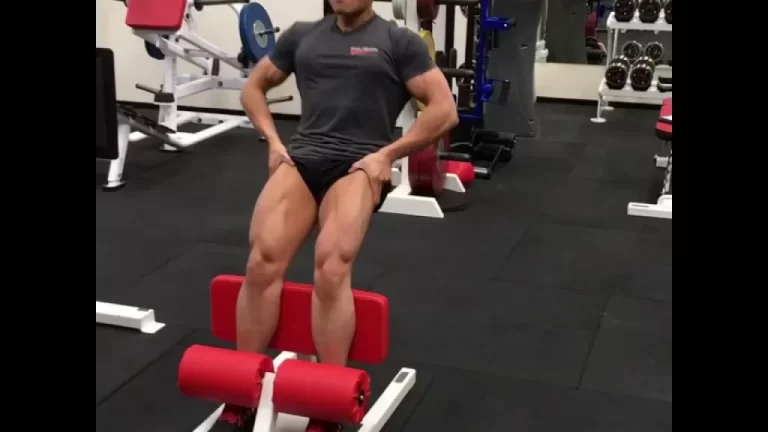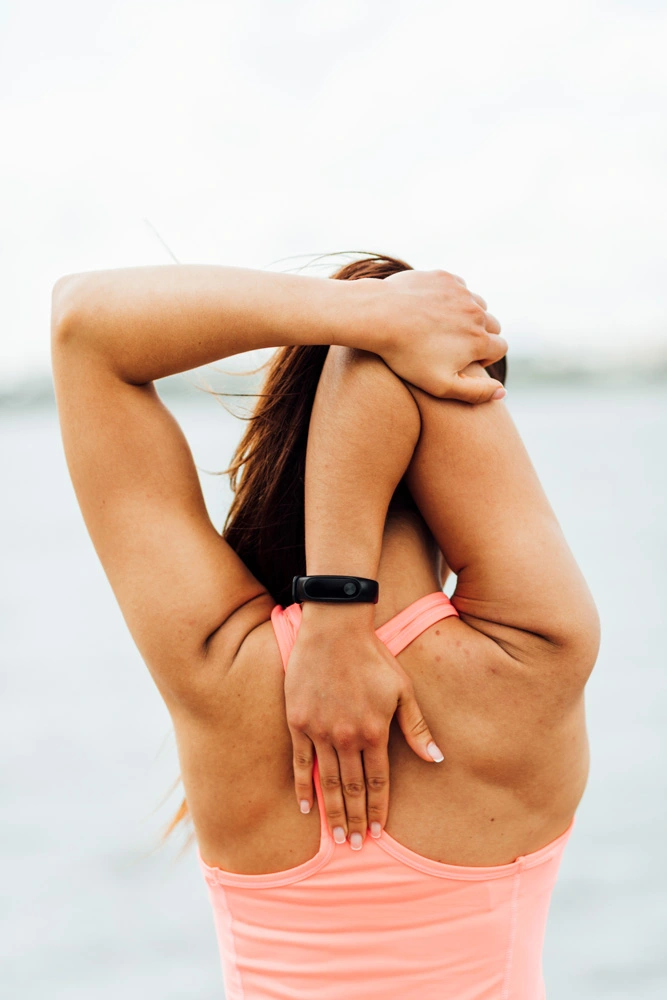Gluteus muscle exercises
Table of Contents
What is the gluteus muscle exercise?
If you want to make a stronger butt, you’ll want to do exercises and activities that strengthen your gluteal muscles. The Gluteal muscles are mainly three different muscles such as the gluteus maximus (the largest muscle), the gluteus medius, and the gluteus minimus.
- Exercises that strengthen the anterior part: resisted hip abduction-extension exercise.
- Exercises that strengthen the Posterior part: single leg bridge, side lie abduction, the resisted hip abduction-extension exercise, and single-leg squat.
- Exercises that build low activity in both segments: side lie clam.
- Low activity was produced in the anterior segment of the single-leg bridge.
What is Gluteal muscle?
- The gluteal muscles are also called the glutes which are a group of three muscles which is made by to gluteal region & commonly known as the buttock.
- This gluteal region is an anatomical area that is located posteriorly to the pelvic girdle.
- These three muscles of gluteal region are the gluteus maximus, gluteus medius & gluteus minimus.
- These three muscles originate from the ilium&sacrum & insert into the femur bone.
- The functions of these muscles include abduction, extension, external rotation -ER, & internal rotation – IR of the hip joint.
The Gluteal includes the following muscles:
Gluteus Maximus: Gluteus Maximus muscle is the largest & heaviest muscle in the body. It is the most superficial of all gluteal muscles that are located at the back side of the hip joint. The Gluteus maximus muscle covers all of the gluteal muscles except for the antero_superior third of the Glutes medius. Gluteus Maximus’s size allows it to bring about a large amount of force (the muscle evolved from an adductor of the hip which is still seen in lower primates today). The development of the muscle’s function is associated with the erect posture & changes to the pelvis, now functioning to maintain the erect posture, as a hip extensor.
Gluteus medius: Gluteus medius muscle is the large fan-shaped muscle in the posterior hip, extending from the ilium to the proximal femur. Together with the gluteus maximus, gluteus minimus & tensor fascia latae muscles, it belongs to the muscles of the gluteal region. The gluteus medius muscle acts on the hip joint producing 2 movements; its anterior part internally rotates the thigh, while the contraction of the whole muscle abducts the thigh. Additionally, the gluteus medius muscle stabilizes the pelvis during standing & walking.
Gluteus minimus: The gluteus minimus muscle is the small triangular muscle located deep in the posterior region of the hip, spanning from the gluteal surface of the ilium to the proximal end of the femur. It belongs to the group of gluteal muscles, along with the gluteus maximus, gluteus medius & tensor fascia lata. The Gluteus minimus acts in synergy with the gluteus medius to produce the motion of the hip joint; the internal rotation & abduction of the thigh.
Health benefits of the gluteus muscle.
Glute exercises have tremendous benefits since they work on the muscles known as the ‘powerhouses’ of the body. Here are some of the most important benefits of incorporating a glutes workout into the routine:
- Glutes muscle workouts help in preventing lower back pain by supporting the movement of the hips & the trunk. They do so by evenly distributing the weight’s load & preventing overload on any one part of the back.
- Developing & maintaining strong gluteal muscles through butt workouts helps prevent injuries to the knees, ankles, hips, & lower back. This is done by preventing dynamic valgus & promoting balance in the knee while running or walking.
- Glutes muscle strengthening exercises promote proper alignment & stability in the lower body. This has a direct impact on the posture & helps in preventing posture-related pains.
- Glute exercises support several functions such as swinging, jumping, twisting, and driving through your hips and legs. This is especially beneficial for athletes who need power & coordination in their hip areas.
- Lower body workouts give you a toned & aesthetic appearance, improving your confidence.
- Glute exercises challenge & mechanically stress the bones in the lower body area. This helps in strengthening the bones and even preventing age-related bone density loss.
- When combined with other forms of exercises such as oblique exercises such as abs workouts, glute exercises help you burn more calories & lose weight. This prevents the serious health risks associated with obesity.
Other benefits of strength training include:
- Stronger gluteus muscles: Strengthening exercises support the muscles to work more effectively. Glute muscle exercises may help a person gain strength to do regular activities, such as lifting, standing, and walking.
- Reduced pain: Strengthening exercises may relieve chronic pain from exact conditions, such as arthritis.
- Improved metabolism: Over time, increasing muscle mass may increase metabolism.
- Lower the risk of falls: Strengthening the muscles can improve coordination and reduce the risk of falls. It can also strengthen the bones, reducing the risk of osteoporosis.
Stretching Exercises for Gluteus muscle
- Gluteus stretch
- Lying Deep Gluteus Stretch
- Groin and long adductor muscle stretch
- Seated figure-four stretch
- Seated glute stretch
- Supine Hip Twist Stretch
- Wall Glute Stretch
- Supine Leg Extension Stretch
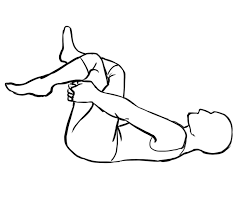
- Gluteus stretch:
- The starting position for the exercise is the supine position.
- The patient is Lying down on the back after that lift to the knee joint & cross to the right ankle joint over to the left knee joint.
- Then Grip the left thigh gently.
- Pull the hip joint in towards the chest.
- Hold this stretching position for 30 seconds.
- Then repeat this stretching on the other leg.
- Do this stretching 3 times in 1 session.
- Then do the 3 sessions per day.
2. Lying Deep Gluteus Stretch:

- The starting position for the exercise is the supine position.
- the patient is lying on the back with the legs being too bent.
- then Raise to the right ankle joint & rest the right ankle on the left knee joint.
- then Using both hands lace with the fingers behind the left thigh & gently pull it toward the patient,
- and keep the head & back onto the floor.
- Hold this stretching position for 20 to 30 seconds.
- then Repeat this exercise with the other leg.
- do this stretching 3 times in 1 session.
- then do the 3 sessions per day.

- Groin and long adductor muscle stretch
- The starting position for the exercise is the sitting position.
- The patient is Sitting down on the floor with the legs spread out too far as the patient so that is straight in front of the body.
- Place the hands onto the floor in front of the body onto the floor & angle the torso toward the floor.
- Lean to the forward, leaving the elbows on the floor.
- Hold to the position for 30 seconds.
- Stop this stretch if they feel any pain.
- Do this stretching 3 times in 1 session.
- Then do the 3 sessions per day.

- Seated figure-four stretch:
- This is also known as the Seated Pigeon Pose.
- The starting position of the exercise is the sitting position.
- The patient is sitting upright in a sturdy chair.
- Place the right ankle on the left thigh, just above the knee joint.
- Then Place the hands on the shins.
- After that Keep the spine straight & then lean slightly forward to deepen the stretch.
- Hold for the stretching position for 30 seconds & do the 3 times in 1 session.
- Then return to the starting position of the stretching.
- After that Repeat with the other leg.
- This stretching is also done in sitting on the floor & standing position.

5. Seated glute stretch:
- The starting position of the exercise is the sitting position.
- Sit on the floor & extend your legs in front of you.
- Keeping the back straight, lift the left leg.
- Place the left ankle joint on the right knee joint.
- Then Lean-to slightly forward &feel the patient deepen the stretch.
- Hold this stretching position for 30 seconds & do the 3 times in 1 session.
- Repeat this stretching on the other side.
- Do the 3 times in 1 session.

6. Z – Sit exercise
- Start by sitting comfortably on the ground.
- Bring the left knee to a 90-degree position in front of the body (as much as your body allows).
- Do the same with your right leg, toward the back of your body.
- You can sit upright in this pose or lean the torso forward toward your front leg.
- Hold the pose for 30 seconds, & then repeat on the other side.
- Supine Hip Twist Stretch
- This exercise stretches the outer hip, where the gluteus minimus muscle is located, without placing stress on your spine. Lie on the floor on the back with arms out to your sides & with your hands on the floor. Put the feet flat on the floor about hip-width apart. Cross your left foot over your right thigh near your knee. Exhale & turn your pelvis toward your right so that your outer right knee & your left foot move
- toward the floor. Do not lift your left shoulder off the ground or twist your upper back. Hold this stretch for 5 to 6 deep breaths. Perform 2 sets of stretches on each side of the body.
7. Wall Glute Stretch:
- This exercise stretches the entire hip region, which also takes the pressure off the sciatic nerves, which run through either side of the buttocks. Lie on the ground on your back, & put your feet on the wall about hip-width apart. Cross the left foot on your right thigh near the knee. Do not change the position of your pelvis as you cross your foot. Push your left knee toward the wall by using your hip. Hold this stretch for 5 to 6 deep breaths. Switch leg position, & repeat the stretch on the opposite hip.
8. Supine Leg Extension Stretch
- This exercise stretches the entire back of your hip & leg from your buttocks & into your calves. Lie on the ground on your back, & lift your left knee to your ribs. Grab the back of your knee, & point your knee so that it faces toward your right shoulder or the right side of your chin. Slowly extend your leg straight up, & flex your left foot toward your right shoulder. Hold the stretch for 5 to 6 deep breaths. Repeat the stretch on the opposite leg.
Strengthening exercise of gluteus maximus muscle
- Buttocks
- Knee to the opposite shoulder
- Side Leg Raises
- Prone Straight Leg Raises [ hip extension ]
- Glute bridge with band
- Seated hip abduction with resistance band
- Spiky ball roll on glutes
- Bridges
- Knee to Chest
- Downward-Facing Dog
- Pigeon Pose
- Clamshell exercise
- Leg bridge exercise

- Buttocks:
- The starting position for the exercise is supine.
- Patient Lay on to the back.
- Then bring the affected leg up to the right angle.
- Grasping the with the help of both hands behind the thigh.
- Then locking to the fingers of the head.
- take the unaffected leg & place the ankle joint against the knee joint
- This exercise Repeat to the opposite sides.
- Do this exercise 3 times in 1 session.
- Then do the 3 sessions per day.

- Knee to the opposite shoulder:
- The starting position for the exercise is the supine position.
- The patient is lying on the back with both legs extended & feet flexed upward.
- Then Bend to the right leg & clasp both hands around the knee joint.
- After that Gently pull the leg across the body toward the left shoulder.
- Hold this exercise position for 30 seconds.
- Push the knee joint so that the leg is returned to the starting position.
- Do this exercise 3 times in 1 session.
- Then do this exercise 3 sessions per day.

3. Side Leg Raises (hip abduction) exercise
- The starting position for the exercise is the side-lying position.
- The patient is lying on one side with the legs stacked.
- The patient is bent to the bottom leg for support.
- Then Straighten to the top of the leg and maybe upraise to 45 degrees.
- Hold this exercise position for 10 seconds & then relax.
- Then Repeat this exercise 10 times in the 1 session.
- Do this exercise in 3 sessions per day.
- Woman doing Side Leg Raise Exercise with lying in 2 Step on the blue mat. Illustration about Thighs Workout.
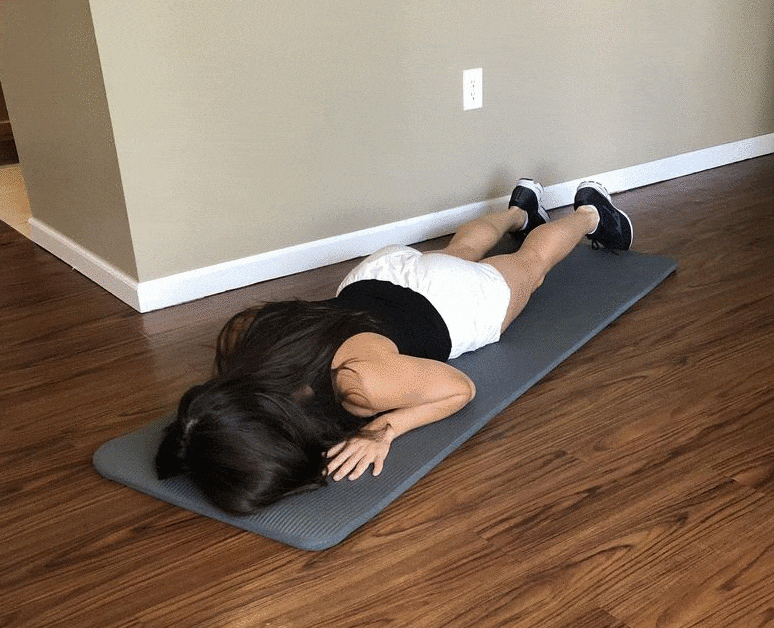
4. Prone Straight Leg Raises (hip extension) exercise :
- The starting position for the exercise is the prone position.
- The patient Lie to flat on their stomach.
- Must be Keep the legs straight.
- Then Tighten to the muscles in the bottom & then the hamstring muscle of the one leg.
- One leg is lifted toward the ceiling.
- Hold this exercise position for 10 seconds.
- Repeat this exercise 10-15 times in 1 session.
- Do this exercise in 3 sessions per day.

5. Glute bridge with the band:
- The starting position for the exercise is the supine position.
- Place a small & tight resistance band around the calves.
- The patient is lying on their back & lifting their hips.
- Must be Keep tension in the band & tap the hip joint down to the floor before raising the hip back up again.
- This is important to keep the spine straight & do the movement from the hip joint.
- Repeat this exercise 10 times in 1 session.
- Do this exercise in 3 sessions per day.

6. Seated hip abduction with resistance band:
- Starting position is the sitting position.
- The patient is Sitting on the floor & placing the resistance band around the calves.
- Bend the knee joint & keep your feet on the floor.
- Then Place the hands slightly behind the patient.
- Must be Keep the back straight back & press the legs out to the sides as they externally rotate the hip joint.
- Then Gently & with control, bring the legs back together.
- Repeat this exercise 10 times in 1 session.
- Do this exercise in 3 sessions per day.

7. Spiky ball roll on glutes
- The starting position for the exercise is the supine position.
- Use the spiky ball to roll out the tight muscles into the buttock.
- Then Roll the ball around to the fleshy part of the buttock for 30 seconds 1 time.
- Do this exercise 10 times in 1 session.
- Perform this exercise in 3 sessions per day.

8. Bridges :
- The starting position of the patient is in the supine position.
- The patient is lying on the back with her knees bent.
- Then patient feet are touching the floor.
- After that Raise the hips toward the ceiling.
- Must be kept back into the straight line with the knees joint & shoulders joint.
- Hold this exercise position for 10 seconds.
- Do this exercise 10 times in 1 session.
- Perform this exercise 3 sessions per day.

9. Knee to Chest :
- Starting position is supine.
- Lie onto the back.
- Starting with the left or right knee.
- Use the hands to gently pull by to the bent knee toward the chest.
- Hold for 10 seconds.
- Repeat this knee-to-chest exercise with the opposite knee.
- Repeat this exercise 10 times per session & 3 sessions per day.
10 Downward-Facing Dog :
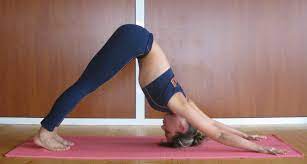
- Start this exercise with the hands & knees.
- Then press into the hands as far as to the lift of the hip joint toward the ceiling.
- Drop the head down to bring the ears into the line with the upper arms & chin all the way toward the chest.
- Bend to the knee joint for the tilt of the pelvis slightly forward.
- Then move to the body through to any variations of to the feel for to the appropriate.
- Hold this yoga pose for up to 1 minute.
- do this yoga pose 3 times a day.

11 Pigeon Pose:
- Starting with all fours limb.
- Move the right knee joint toward to right wrist then place the shin on the floor.
- Then Move to the right ankle toward to left wrist.
- Slide the left leg back, point the toes & keep the hip joint facing forward.
- Then Extend the spine.
- Gently walk the hands forward.
- Hold this position for 5–10 breaths.
- Then return to the starting position.
- Switch the legs & repeat.
- Do this yoga the 3 times per day.
- Clamshell exercise

- Lie on your side, with legs stacked & knees bent at a 45-degree angle.
- Rest your head on your lower arm, & use your top arm to steady your frame. …
- Engage your abdomen by pulling your belly button in, as this will help to stabilize your spine & pelvis.
13. Leg bridge exercise:

- Tighten your abdominal & buttock muscles.
- Raise the hips up to create a straight line from your knees to shoulders.
- Squeeze your core & try to pull your belly button back toward your spine.
- Slowly raise & extend one leg while keeping your pelvis raised & level.
- Hold.
- Return to the starting position with the knees bent.
- Perform the lift with the other leg.

14. Standing side bend exercise
- Using a wall for balance, stand with one side of the body to a wall.
- Cross the leg farthest from the wall in front of the other.
- Place one hand on the wall & the other on the hip. Then lean your upper body away from the wall, & push your hip toward the wall
- Hold for 20 to 30 seconds, then repeat on the other side

- Weighted deadlift
- Stand with your feet parallel & hip-width apart. If you feel comfortable, hold light dumbbells.
- Keep your spine long & your gaze forward. Your shoulders should be back & down.
- Squeeze the glutes as you fold from the hips, bending the knees so that your seat reaches back past the heels. Resist the urge to round the spine in order to “give in to the weight.”
- Allow your glutes & belly to control the descent & ascent.
What precautions should take during exercise?
- Start slowly. These are starting exercises. Ask the healthcare provider if you need to see a physical therapist for more advanced exercises. As you get stronger, you may be skilled to do more sets of each exercise or add weights.
- Stop if you feel pain. It is normal to feel some discomfort at first, but you might not feel pain. Constant exercise will help decrease the discomfort over time.
- Warm up before you do glute exercises. Ride a stationary bike or walk for 5- 10 minutes to warm the muscles.
- follow the exercise program recommended by the healthcare provider. He or she will tell you which exercises are best for the condition. He or she will also tell you how many repetitions to do & how often you might do the exercises.
FAQ
What is the best exercise for the glutes?
The best glute exercises include fire hydrants, single-leg step-ups, & Bulgarian split squats. To build the glutes, train twice a week on non-consecutive days & eat more protein. Exercising the glutes is important because they help us walk, run, jump, & climb stairs.
What are 3 exercises that strengthen the glutes?
Exercises that strengthen the glute Maximus include squats, lunges, deadlifts, donkey kicks, glute bridges, glute/ham raises, and hip thrusters to name a few. The gluteus medius & minimus can be seen as the side glutes or lateral glutes as they sit more to the side of the pelvis than the gluteus maximus.
Do squats make the butt bigger?
Squats work all of the glute muscles in one motion. When you strategically recruit & tax these muscles, you can trigger hypertrophy. So, yes, squats can build bigger glutes.
Why is my bum getting smaller after a workout?
extreme cardio can burn muscle mass & break down muscle tissue. If you feel like you can’t live without extensive cardio in the workouts a great machine to use would be the stair climber, it’s an excellent way to burn fat but still stay lean.
Why is my butt flat?
Conditions that cause a flat butt
Often this occurs from sitting for too long, sleeping in the fetal position, & repetitive activities. insufficient of exercise can also contribute to dormant butt syndrome. This puts excess pressure & strain on other parts of the body

